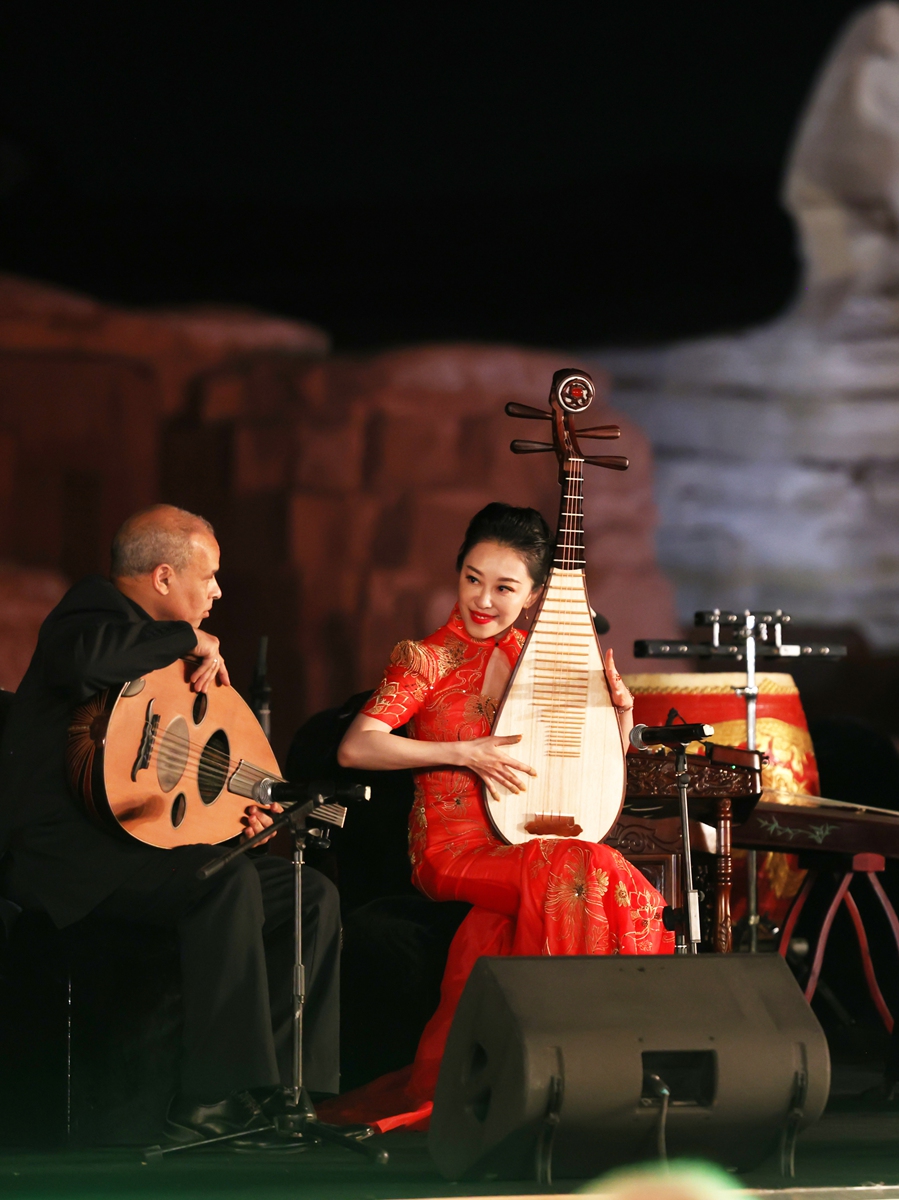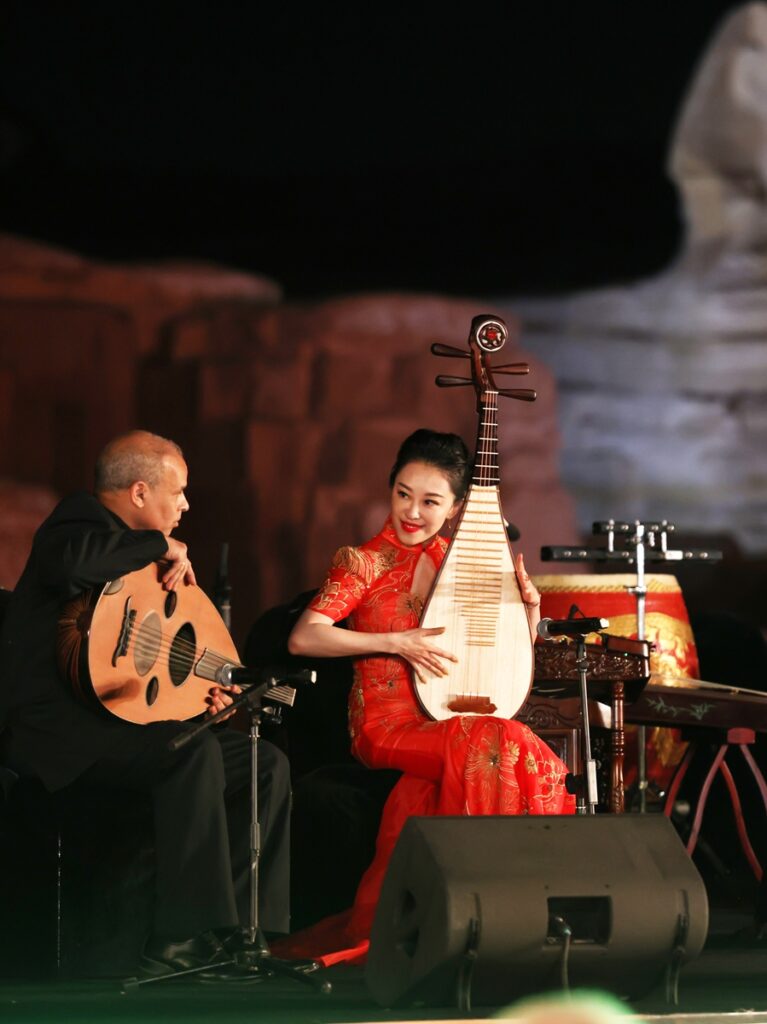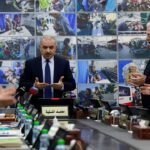Shared culture
At around 140 BC during China’s Han Dynasty, Zhang Qian, a royal emissary, made a journey to the West from Chang’an (present-day Xi’an in Shaanxi Province), opening an overland route linking East and West. Centuries later, in the years of the Tang, Song and Yuan dynasties, silk routes boomed over both land and at sea. In the early 15th century, Zheng He, the famous Chinese navigator of the Ming Dynasty, made seven voyages to the Western Seas, which boosted trade along the maritime silk routes.
For thousands of years, the ancient silk routes served as major arteries of interaction, spanning the valleys of the Nile, the Tigris and Euphrates, the Indus and Ganges, and the Yellow and Yangtze rivers. They connected the birthplaces of the Egyptian, Babylonian, Indian and Chinese civilizations, the lands of the believers of Buddhism, Christianity and Islam, and the homes of peoples of different nationalities and races.
These routes increased connectivity among countries on the Eurasian continent, facilitated exchanges and mutual learning between Eastern and Western civilizations, boosted regional development and prosperity, and shaped the Silk Road spirit characterized by peace and cooperation, openness and inclusiveness, mutual learning and mutual benefit.
This shared Silk Road spirit has been passed down through the Belt and Road Initiative (BRI) as a common belief that through communication and cooperation between the East and the West, countries of different ethnic groups, beliefs and cultural backgrounds could share peace and achieve development together.

Zhao Cong (right), playing pipa, performs with a foreigner playing the Arabian oud Photo: Courtesy of China National Traditional Orchestra
When night falls on the Great Pyramid and Sphinx in Giza, Egypt, the rhythm of the song “Impression of Roses” echoes among these giant buildings. Chinese and Arab artists jointly presented the piece, in which the Chinese pipa, a lute with four strings, was played in an ensemble with the Arabian oud as a tribute to the two ancient civilizations through music.
The pipa and the oud share roots and have much similarity, said Zhao Cong, a veteran pipa player who is also president of the China National Traditional Orchestra, and it becomes even more meaningful to witness cultural exchanges and dialogue between China and Egypt.
Dialogue and exchanges
In Athens, the origin of ancient Greek civilization, a “dialogue” between Confucius and Socrates, the two wisest philosophers, is taking place as they stand together in the center of Greek culture.
If Confucius had the chance to visit Greece, he would “feel happy and honored, as if he were riding the spring wind of building a community with a shared future for mankind. So his clothing was sculpted in a style of xieyi to make it look as if he is lecturing on his concepts,” recalled Chinese artist Wu Weishan, who created the iconic xieyi sculpture style as a gift to the Greek people.
Stelios Virvidakis, a professor at the University of Athens and also the steering chairman of the Center of Chinese and Greek Ancient Civilizations, said that his center has hosted a number of scholars who gave lectures during the summer and students found them “interesting” and “inspirational.”
People all over the world, in different places and from different cultures, can “share similar feelings and have similar emotions,” and “we can live together with exchanges, peaceful and rich exchanges,” he told the Global Times.
“Mutual learning between the Chinese and Greek civilizations has established a model for equal exchanges and mutual learning among different civilizations. It represents a significant aspect of promoting people-to-people connectivity within the framework of the BRI.
“The spiritual strength embedded in the two great civilizations of China and Greece can provide important spiritual guidance for humanity in addressing contemporary challenges and advancing the construction of a shared future for mankind,” Chinese Ambassador to Greece Xiao Junzheng told the Global Times.
Closer ties
People-to-people ties are the social foundations of BRI cooperation. The participating countries have passed on and carried forward the spirit of friendly cooperation of the ancient Silk Road, cooperated on exchanges in culture, tourism, education, think tanks and the media, and promoted mutual learning among civilizations and cultural integration and innovation.
A model of people-to-people exchanges characterized by dynamic interactions and diversity has underpinned public support for furthering the initiative. As of the end of June 2023, China had signed cultural and tourism cooperation documents with 144 BRI partner countries and regions.
In Hungary, Torma Laura, majoring in Chinese at Eötvös Loránd University, introduced the novel Long Live Youth by Chinese writer Wang Meng at a recent reading event by the China Culture Center in Budapest. Szép Bálint from the Chinese Department of Pázmány Péter Catholic University analyzed Chinese Nobel laureate Mo Yan’s novel The Republic of Wine through four aspects.
China’s rich culture products including online novels, mobile games, streaming series and movies have become more and more popular among overseas young people.
Megyeri Janka, also from Eötvös Loránd University, introduced her favorite xianxia or immortal heroes trilogy of writer Ergen (pseudonym), One Thought of Eternity, The Immortal Rebellion and Three Inches of the World. From the perspective of comparative literature, she explains the similarities and differences between the Western magical world and the Eastern fairy world.
In neighboring Serbia, learning Chinese and Chinese culture has become a window for local young people to understand China as they love China’s streaming dramas, TV shows and games.
For a better world
The Silk Road spirit is consistent with the ideal of “all states joining together in harmony and peace” long upheld by the Chinese nation, with the Chinese people’s principles of amity, good neighborliness and “helping others to succeed while seeking our own success”, and with the call of the times for peace, development and win-win cooperation.
For young people around the world, the initiative that originates from China’s traditional culture contains universal wisdom and foresight shared by different civilizations.
“We Arabs like to use the proverbial expression ‘From each orchard, pick a rose’ to refer to the diversity and richness of an object,” Yara Ismail, a lecturer at Cairo University, told the Global Times.
Thousands of miles from Yara, Indonesian sinologist Novi Basuki recalled an interesting fact when learning about the initiative.
“The lessons learned from playing angklung, a traditional Indonesian musical instrument with nine pitches, has taught us that it is impossible for one single performer to finish [a performance] as each performer in an angklung ensemble is typically responsible for just one pitch,” Basuki told the Global Times. “Only with cooperation and coordination by the players can we produce beautiful music. For the whole world, it means a better world.”
The BRI champions equality, mutual learning, dialogue and inclusiveness among civilizations. It upholds the shared values of peace, development, equity, justice, democracy and freedom. It transcends barriers between cultures through exchanges, resolves conflicts through mutual understanding and rejects superiority while promoting coexistence. It encourages civilizations to appreciate their differences, seek common ground and learn from one another.
(Global Times)




